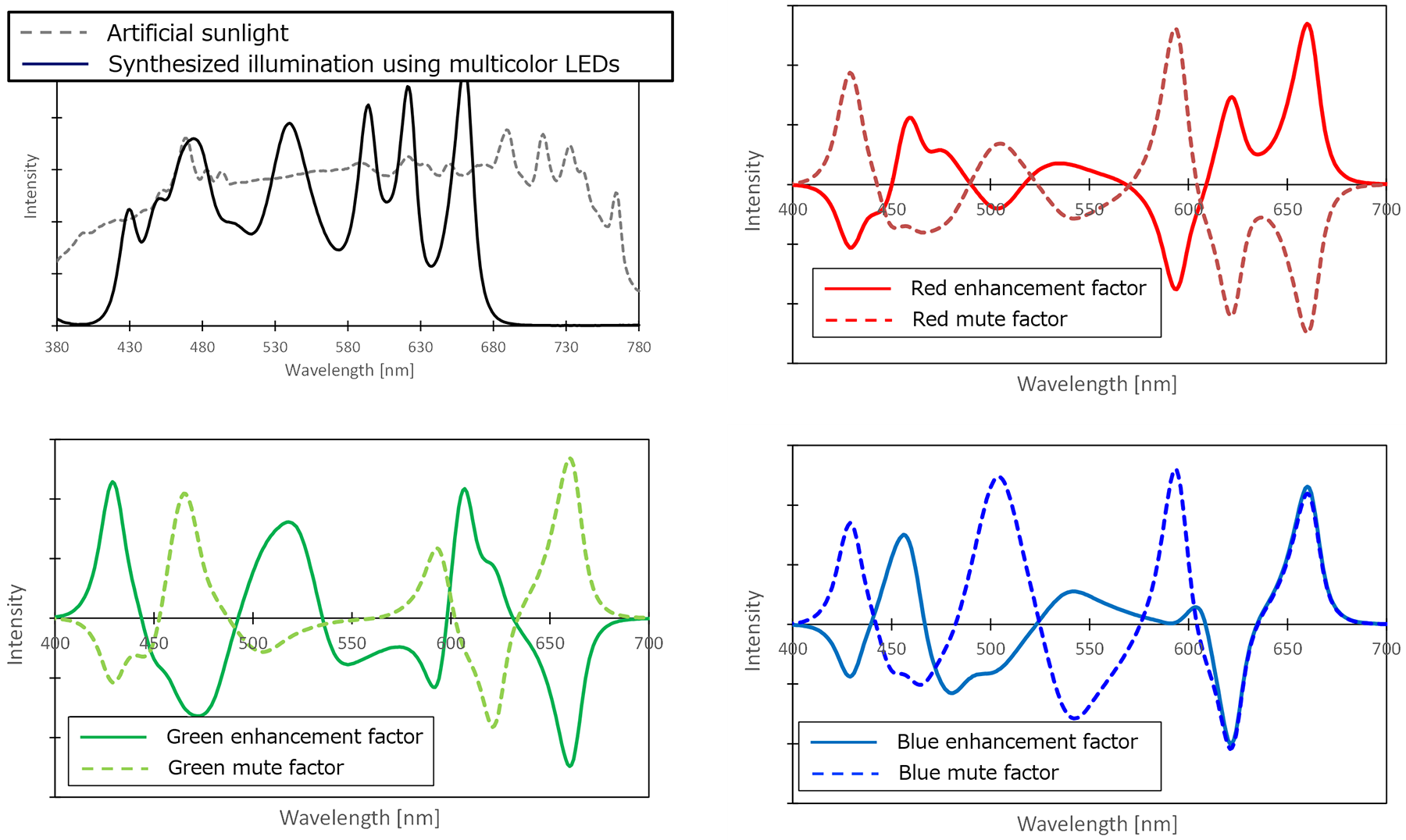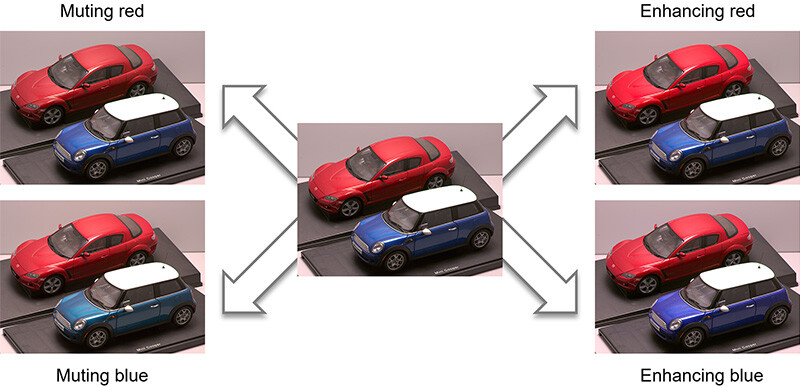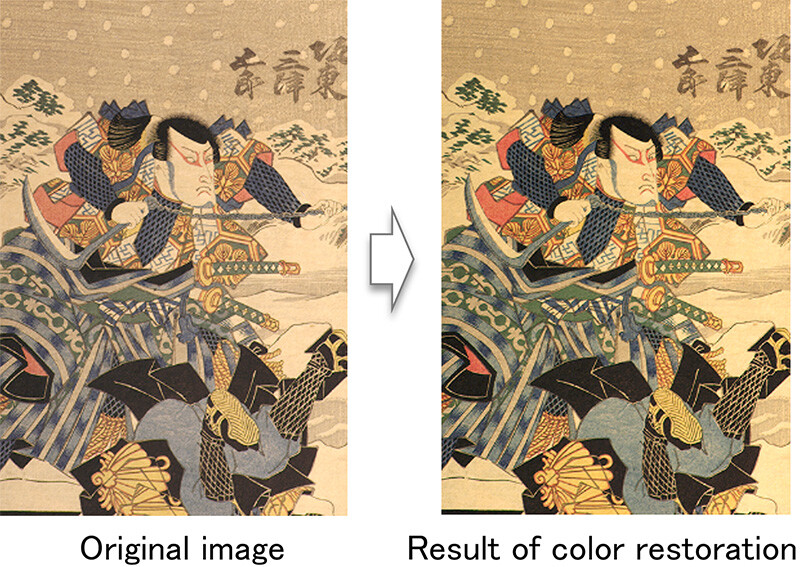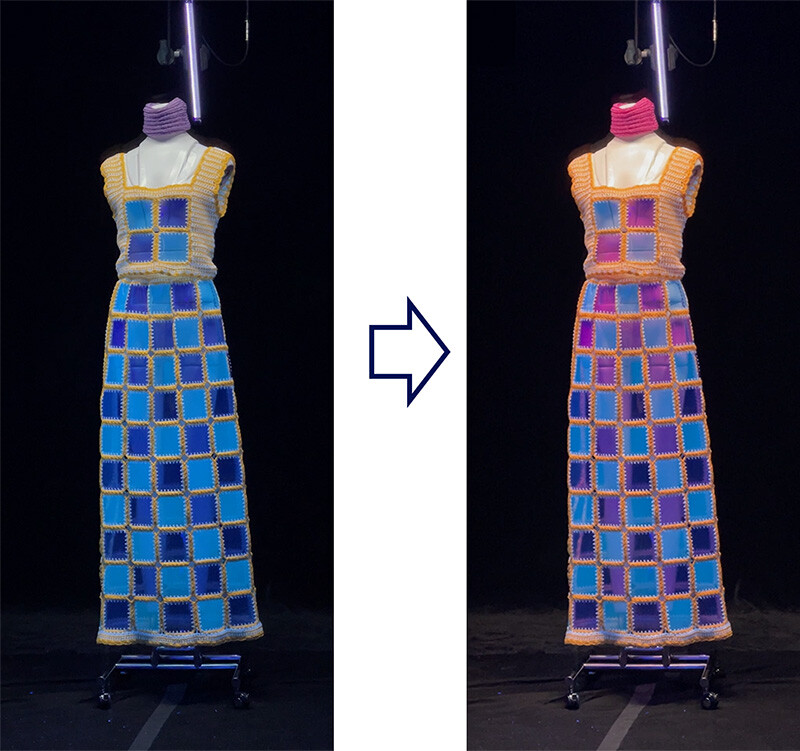Controlling the Color Appearance of Objects by Optimizing the Illumination Spectrum
[Japanese|English]
Abstract
(1) Design optimal illumination spectrum for various purposes.
(a) Saturation and hue control of specific color
ex. Enhancing red saturation while preserving color appearance of white, green and blue.
(b) Enhance color difference
(2) Generate optimized illumination spectrum and control color appearance using “color enhancement factor”
(a) Generate illumination spectrum using multi-color LED lighting system.
(b) Enhance target color continuously and independently enhanced.
Contributions
Generally, in order to check variations such as changing the color of part of a product, there are only two methods:
(a) creating multiple product samples, or
(b) photographing the object and editing the image with photo retouch software and check the resultant image on a monitor.
The former incurred prototype production costs, while the latter faced the difficulty of accurately color reproduction on a monitor and replicating the material’s texture.
In our technology, it becomes possible to modify the vividness (saturation) and hue of specific colors by appropriately optimizing the illumination spectrum, The key feature is that users can observe color variations on the actual object, rather than on a displayed image on a monitor.
To make this possible, we discovered a “color enhancement factor” for the first time in the world. By precomputing the color enhancement factor and adjusting its weighting relative to a reference illumination spectrum simply adding or subtracting it, we can continuously vary the color appearance of only specific colors.

Fig. 1: Color enhancement factors

Fig. 2a: Coloring simulation

Fig. 2b: Coloring simulation

Fig. 3:Virtual Color restoration

Fig.4: Specific color change
This technology was implemented onstage of “ANREALAGE”, a Japanese fashion brand, for the official program of Paris Fashion Week 2024 Spring/Summer held in September 2023.
Fig. 5:Demonstration video in SIGGRAPH20
Future work
1 Color adjustment simulation for prototyped products
2 Diagnostic support(e.g. color enhancement of blood vessels or affected area)
3 Virtual color restoration of aged cultural assets
Publications
- M.Tsuchida, etc, ” Color saturation control by modulating spectral power distribution of illumination using color enhancement factors”, J. Electronic Imaging (SPIE and IS&T), Nov∕Dec 2021, Vol. 30(6), 063022-1 to 063022-23、2021. DOI: https://doi.org/10.1117/1.JEI.30.6.063022
- M. Yamaguchi, M. Tsuchida, etc, “Controlling the Color Appearance of Objects by Optimizing the Illumination Spectrum”, ACM SIGGRAPH 2024, Emerging Technologies & Talks, 1-2, 2024, DOI:https://dl.acm.org/doi/10.1145/3641517.3664388
- Demonstration video in SIGGRAPH2024
- Press release
Contact
Masaru Tsuchida
Recognition Research Group, Media Information Laboratory, NTT Communication Science Laboratories
Related Research
- Theoretical Understanding of Source-free Domain Adaptation
- Deep Image Generation Based on Optics and Physics
- Controlling the Color Appearance of Objects by Optimizing the Illumination Spectrum
- The Trichromatic Lottery Ticket Hypothesis
- Efficient Algorithm for K-Multiple-Means
- Unsupervised Learning of 3D Representations from 2D images
- Generalized Domain Adaptation
- Efficient Algorithm for Anchor Graph Hashing
- Zero-shot knowledge distillation
- Human pose estimation with acoustic signals